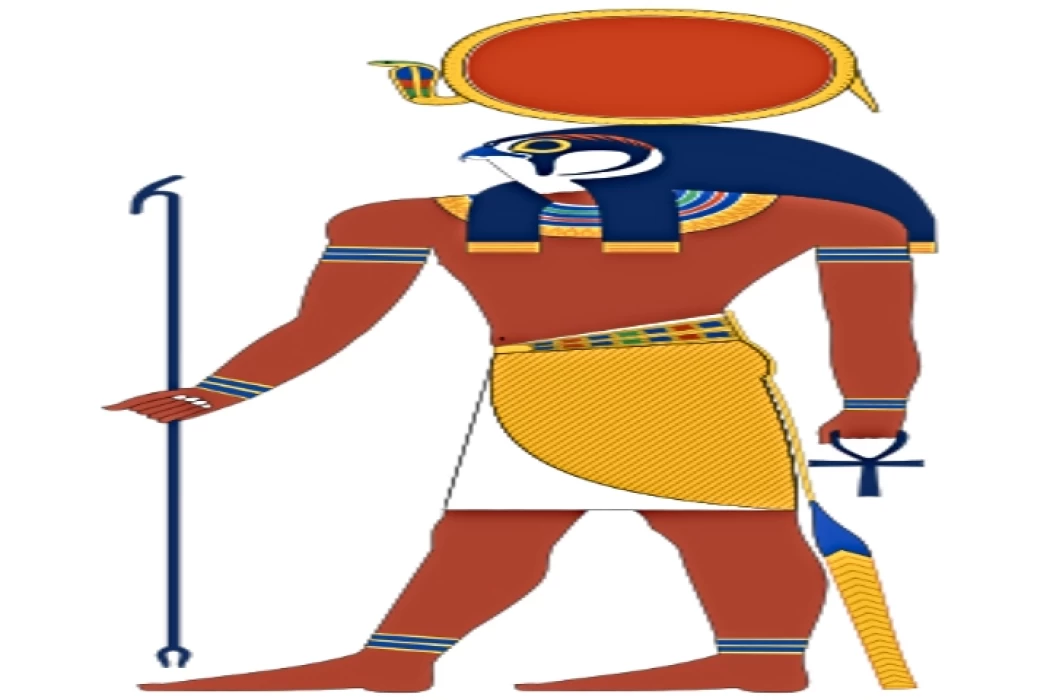
Re-Hor-Achti (Dios del antiguo Egipto)
Re-Hor-Achti (Dios del antiguo Egipto) es el dios principal del templo de Abu Simbel (templo de Ramsis II), está representado en el dios de las horas con forma de halcón y el disco solar sobre su cabeza que apunta a Re dios.
Re-Hor Achti adorado en Abo-Simbel y Wadi El-Saboaa A veces se simboliza con la forma de un ser humano coronado por la cabeza de un halcón que lleva sobre su cabeza un disco solar rodeado por una serpiente "Urius".
Es un símbolo de la unión entre el dios sol "Ra" (cuya fe se extendió en particular en el norte de Egipto, donde la ciudad de "Heliópolis" era la sede de su culto), y el dios del cielo "Horus" (cuya fe difundido en Edfu en el sur de Egipto) y después de la unión de las caras norte y sur unieron los sacerdotes entre los dioses del norte y el sur en la forma de (Ra-Harakhti) y la unión entre ellos simbolizó el viaje divino del sol. rayos de este a oeste
El antiguo egipcio creía que esta entidad divina participó en la creación del mundo y que la salida del sol es un símbolo de esta creación, ya que consideraban el ciclo diario del sol desde que sale y se pone y luego vuelve a brillar al día siguiente. que no es más que un símbolo de regeneración y desde aquí, Ra consideraba el poder supremo de la creación como consideraba al Señor de la vida ... no hay vida sin el sol
Re-Hor-Achti ( God of ancient Egypt ) is the main god for Abu Simbel temple ( Ramsis II temple ) its represented in Hours god with falcon form and the sun disk above his head which point to Re god
According to the museums sector, this doctrine spread particularly in northern Egypt, where the city of On (Heliopolis) was located, and in the south the worship of Horus spread. Then, after the union of the northern and southern sides, the god of the north and south was united in the form of Ra-Hor-Akheti.
Re-Hor Achti worshiped in Abo-Simbel and Wadi El-Saboaa is sometimes symbolized by the form of a human being surmounted by the head of a falcon carrying on its head a sun disk surrounded by a snake "Urius"
It is a symbol of the union between the sun god "Ra" (whose faith spread in particular in northern Egypt, where the city of "Heliopolis" was the seat of his worship), and the god of heaven "Horus" (whose faith spread in Edfu in southern Egypt) and after the union of the northern and southern faces united the priests Between the gods of the North and the South in the form of (Ra-Harakhti) and the union between them symbolized the divine journey of the sun's rays from east to west
The ancient Egyptian believed that this divine entity participated in the creation of the world and that the sunrise is a symbol of this creation, as they considered the daily cycle of the sun from its rising and setting and then it's shining again on the next day, which is nothing but a symbol of regeneration and from here, Ra considered the supreme power of creation as he considered the Lord of life ... there is no life without the sun















